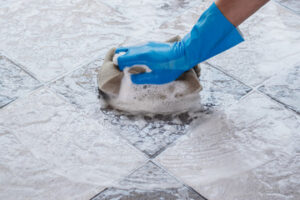The best LPR cameras combine specialized camera technology with access control networks to provide a complete security solution for commercial property and gated communities. They’re ideal for monitoring parking lots and driveways, and for law enforcement applications.
The key to LPR accuracy is ensuring vehicles come to a stop—or at least slow down—when they approach the camera’s field of view. Other factors include plate localization, sizing, and orientation. Keep reading the article below to learn more about License Plate Recognition Camera.

The best LPR cameras provide a wide range of features that improve the quality and accuracy of license plate capture. They’re designed to offer a balance of advanced recognition technology and user-friendly operation, making them ideal for parking lot monitoring and other applications where vehicles are regularly present.
One of the most important features for any license plate recognition camera is a high resolution. This measures how many pixels are packed into a single square inch of the image, and is determined by a camera’s pixel density. The higher the pixel density, the better the image quality.
Another feature that’s often a consideration is a built-in glare suppression mechanism. This ensures that the camera can detect and read the plate number even in challenging conditions such as bright sunlight or low light. This is especially useful if the location where the camera is installed experiences a lot of traffic and requires constant monitoring.
Other useful features include a high frame rate, which determines how quickly the camera takes pictures. A higher frame rate can help the camera catch more details of a car’s make and model, which can be helpful in determining if a vehicle is suspicious or not.
Finally, it’s a good idea to look for a camera that offers a tamper-proof design. This is important because tampering can compromise the camera’s ability to capture and read license plates correctly. Top options will have a tamper-resistant design that can withstand up to 20 joules of impact, ensuring the camera is protected and secure.
For increased efficiency, look for a camera that can integrate with other security systems. For example, if you have a gate access control system at your commercial real estate property, it’s possible to link an LPR camera to this to allow or deny vehicles entry to your facility based on their registration information. Additionally, you can also use LPR camera data to create reports that can be used to improve your parking management strategy. In addition to this, you can use the camera to monitor for suspicious activities and alert security teams of potential threats as they occur.
Operation
With recent developments in AI software, license plate recognition cameras are helping property owners and security teams better detect and investigate suspicious activities. Stakeholders can utilize LPR camera systems to streamline access control systems, monitor parking facilities, and even aid in law enforcement investigations of vehicular crime.
When a vehicle approaches the camera’s field of view, the camera automatically takes several images of the vehicle and its plates. These images are then analyzed by the camera’s internal software program. This program combines different algorithms to discern legible text from footage that appears illegible to the human eye. The program normalizes the image’s brightness and contrast, identifies the plate’s position, sizes the plate, segments its characters, and finally converts the segmented characters to a text file for analysis.
Most LPR camera solutions will include a graphical display that shows the current status of the system. This status screen can be accessed by simply clicking on a button or icon on the system’s dashboard. Once the status screen opens, it will provide a list of all captured vehicles along with any relevant information about each. This display also includes a number of filters to help users pinpoint specific events and search through captured data.
The graphical display will also include a ‘snapshot handling’ menu that allows users to specify whether they want the system to create a pass record for all vehicles that it didn’t accurately recognize. This feature is particularly useful when monitoring large parking lots where a few false captures can lead to a significant amount of wasted time.
In most cases, it is preferable to minimize the number of false captures. The best way to do this is to make sure the camera is positioned so that its line of sight is directly perpendicular to the plate surface under optimal conditions. In other words, the camera should not be at too shallow an angle, as this will cause the plate image to become distorted.
The type of lighting at the location where the camera is positioned will also influence the accuracy of the captured plate image. Ideally, the camera will be in full daylight with sufficient natural or artificial lighting to illuminate the plate. This is especially important for applications where the camera will be used to identify vehicles at night and in low-light conditions.
Installation
LPR systems are used by a number of organizations to track vehicle information, such as plate numbers. They’re used by traffic control and law enforcement to enforce speed limits, spot dangerous driving behavior and track vehicles that have violated parking rules or other regulations. They’re also used to identify vehicle owner information to help with a variety of other security applications such as commercial real estate, airport parking and gated communities.
To ensure that a camera captures license plates as clearly and accurately as possible, it’s essential that the installation site is carefully selected. It should be located in a “choke point” area, where cars move in a predictable and consistent way (such as parking lots, alleyways or roads). The camera’s field of view should be narrowed down to ensure that the plates take up the majority of the image. If the camera has a higher megapixel count, this helps improve the recognition quality of the captured images.
The camera should be mounted looking directly in a head-on direction at approaching or exiting vehicles, at an elevation no more than 15 degrees from the plates. It is also important to note that ANPR cameras are most effective when they are mounted facing the plate, rather than toward it. Movement toward or away from the camera will be more likely to be picked up by PIR+Motion detection than a direct movement of the plate itself. If the camera’s location is not adequately illuminated, a camera with built-in or external infrared illumination can help enhance the clarity of the image and improve its ability to read plate numbers.
Modern LPR camera systems have specialized software that can be used to adjust the settings and parameters of the system to optimize performance in specific installations. These settings typically include exposure, zoom and focus. To ensure that the camera performs as expected, stakeholders should carefully test and adjust these settings before regular use. For example, some systems may have an option that allows them to “lock in” the same plate output, meaning that if the same car is photographed multiple times with the same plate number, the camera will only register one capture and save one entry in the database.
Maintenance
A license plate recognition camera is a specialized surveillance tool that takes data collection to a whole new level. These cameras combine high-resolution imaging and glare compensation to capture clear images in a variety of weather conditions. This makes them a powerful addition to traffic control systems, electronic toll collection methods, and other security applications.
What makes a license plate recognition camera different from regular security cameras is that they are capable of actually reading the license plate number and storing it as digital data. With this added functionality, you can create a database of plates and easily match them to vehicles entering or leaving your property.
The ability to read license plate numbers can provide a wealth of data on vehicle traffic patterns and trends that can help improve the efficiency of your business operations. It can also identify potential safety risks and help your team take proactive measures to mitigate these dangers. Furthermore, if you are using your license plate recognition camera for access control, you can use this technology to blacklist specific vehicles from entering your property. This will ensure that anyone who does not have an approved vehicle registration number cannot enter your property.
It is important to note that a license plate recognition camera works best when it can see the entire vehicle and all of its relevant details. In order to achieve this, you should position the camera so that the vehicle is in the center of its field of view. Moreover, it is essential to choose a camera that has high-resolution capabilities and a wide dynamic range.
Depending on the environment in which your camera is located, you might need to install additional lighting to overcome image degradation caused by poor lighting or other environmental factors. This is especially true for locations that experience extreme heat or inclement weather.
Additionally, it is important to clean the lens of your LPR camera regularly to remove dust and other obstructions. If your camera is installed outdoors, it may need to be repositioned or wiped down frequently, as well. Keeping your lens clean can significantly reduce the likelihood of inaccurate readings.








